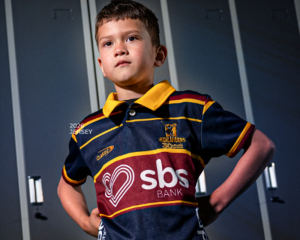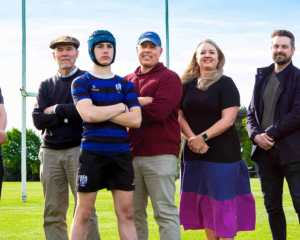ODT Online rugby writer Jeff Cheshire identifies some key points from Otago's ITM Cup match loss to Hawke's Bay at the weekend.
Mistakes can be costly
A 39-22 scoreline does not look flash, but looking at Otago's performance holistically, it really was not that bad. The five second-half tries Hawke's Bay scored all came from one off mistakes which were pounced upon and Otago could not recover from. A dropped kickoff, a missed tackle, a poor clean out, a loopy pass and a slow kick chase all essentially directly led to five tries in 20 minutes.
And that was the game. In the big picture five mistakes does not seem that bad. But if those mistakes leave you exposed and the opposition is capable of punishing you, they can have a massive impact on the game. Being accurate for the whole game is important and making those few mistakes and not making them can be the difference between a close game and a thrashing.
Aside from that 20 minute period in the middle of the second half though, there were a lot of good things going on, so let's acknowledge the poor patch, but concentrate on the improvements.
Great defence for 50 minutes
It was a good defensive showing from Otago, for the first 50 minutes at least. During that period they showed great intent to get up and smother a dangerous Hawke's Bay backline. Their line speed was fantastic and, for that period, they were not falling off tackles, often getting up and making good hits to force turnovers. It was encouraging and in fact, the only try they conceded came from a crafty piece on play disguised as a rolling maul. Throughout the middle of the second half, it became harder, as Hawke's Bay began finding more holes and Otago were forced to scramble, which stopped them getting up so quickly. That enabled the Hawke's Bay backline, which always had potential to be lethal, to really show what they could do when they got into space. In the end they were simply too good despite Otago's best efforts.
Intelligent breakdown work
One of the things mentioned from the Otago camp after last week's loss to Canterbury was that there were too many people committing to rucks. This week there was an obvious intent to fan out on defence and only contest the breakdown when it was on - and they did it well. When they did attack the ball, they managed to secure a handful of turnovers, or at least penalties, some of which came at crucial times. The other side of that, is that when they did not commit, there were more defenders across the park, meaning there were less holes in their line and they were consequently harder to get through. Again, as the game progressed and Hawke's Bay got more front-foot ball, that became less prominent.
More threats out wide
There was some danger evident in the Otago attack, particularly in the backs. Matt Faddes looked good at centre, running hard, showing his pace and finding holes to make a handful of breaks.
Outside him both Tony Ensor and Jack Wilson added enough spark when they got the ball in space, while Peter Breen ran the ball back well from fullback. Undoubtedly that was helped by a better showing from the forward pack, which made Kaide Whiting's job easier. Fletcher Smith put in another impressive display, getting the ball through his hands quickly and passing out in front of the men outside him to put them into space. It is still not exactly deadly, but it is improvement on what they have offered over the past year or two.
Chasing kicks better
Otago stuck with the kick and chase tactic they employed last week, but they did a better job of it this time around. Fletcher Smith continued in a similarly calm and effective manner to last week, but this time he had help from Peter Breen, who looked far more assured tactically at fullback than Ensor had, while Kaide Whiting was a bit more accurate from the base too. The chase line got up quickly and cut down the room Hawke's Bay had to work with and applying pressure, particularly when they looked to run the ball back from deep in their own half.
Pace of the stadium
The pace of the game was predictably very fast. Of course it was not surprising to see Hawke's Bay want to speed the game up, but Otago coped with the increased speed well. Defensively they got up, made good, quick decisions under pressure to stifle the Hawke's Bay attack, while they looked to use the ball more on attack. Perhaps it did catch up to them in the second half, as Hawke's Bay seemed to go to another level for a period, but Otago certainly held their own for a long time against a backline full of Super Rugby stars.
Pack of workers, lack of impact
Whatever Otago's deficiencies might be, effort and work rate certainly are not among them. The forward pack are full of players who just keep on going. They tackle, they get to rucks, they support play and then they get back up and do it again. Individually they are doing okay, but as a collective they are too similar. Aside from Josh Dickson, there has been no dynamic presence. No one has provided go-forward with ball in hand, or brought that raw physicality and intensity you got from a TJ Ioanetype player. Aki Seiuli can do it and he will be useful when he comes back, while Naulia Dawai has been energetic and could be one looked at to play a bigger role in order to provide something different.












